FlashRev New Weekly Update [13th October 2025 - 18th October 2025]
FlashRev Discover
1. crm import clolumn --- Salesforce set the default field in setting--CRM Integration --Salesforce (Manage) --Import Columns
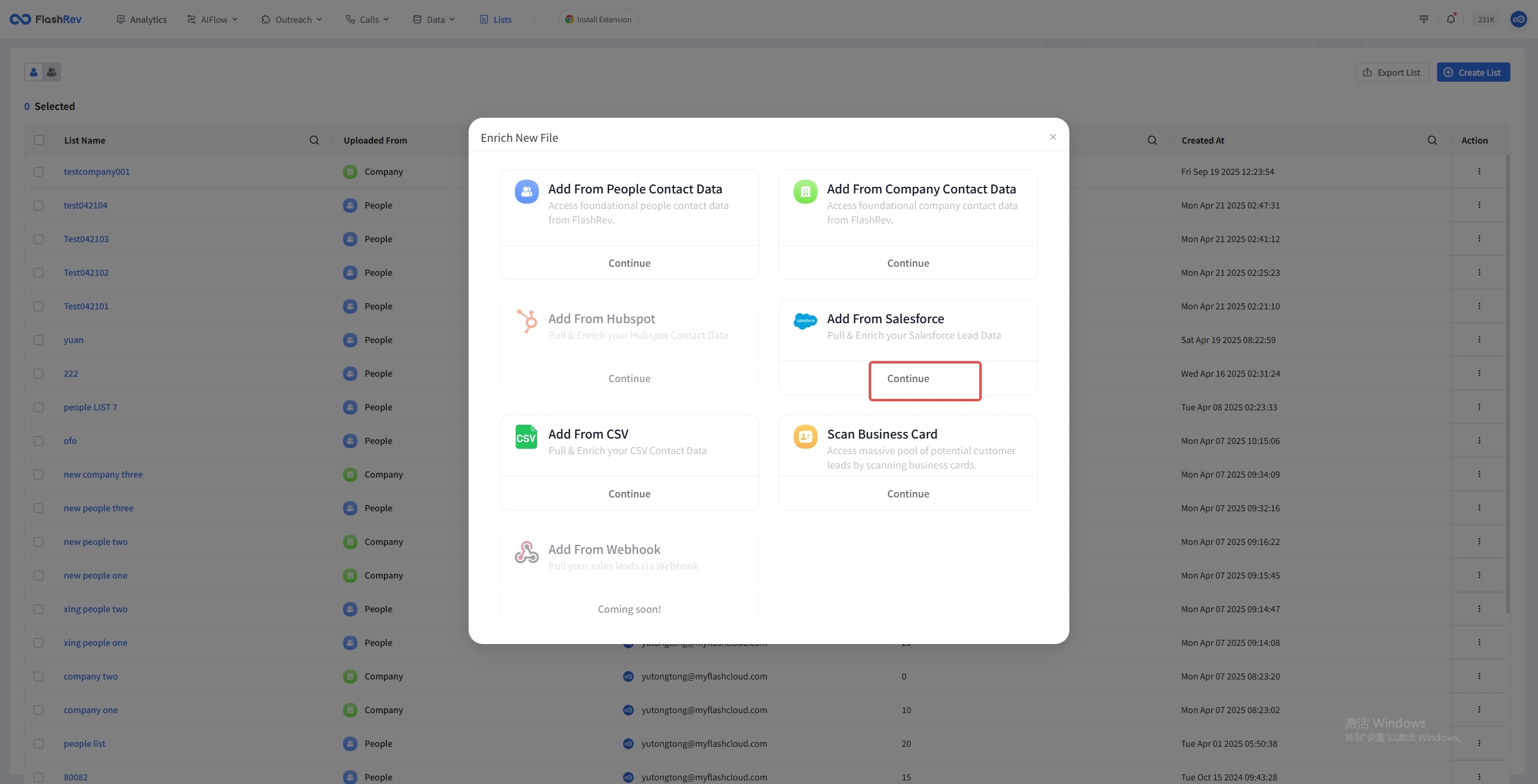
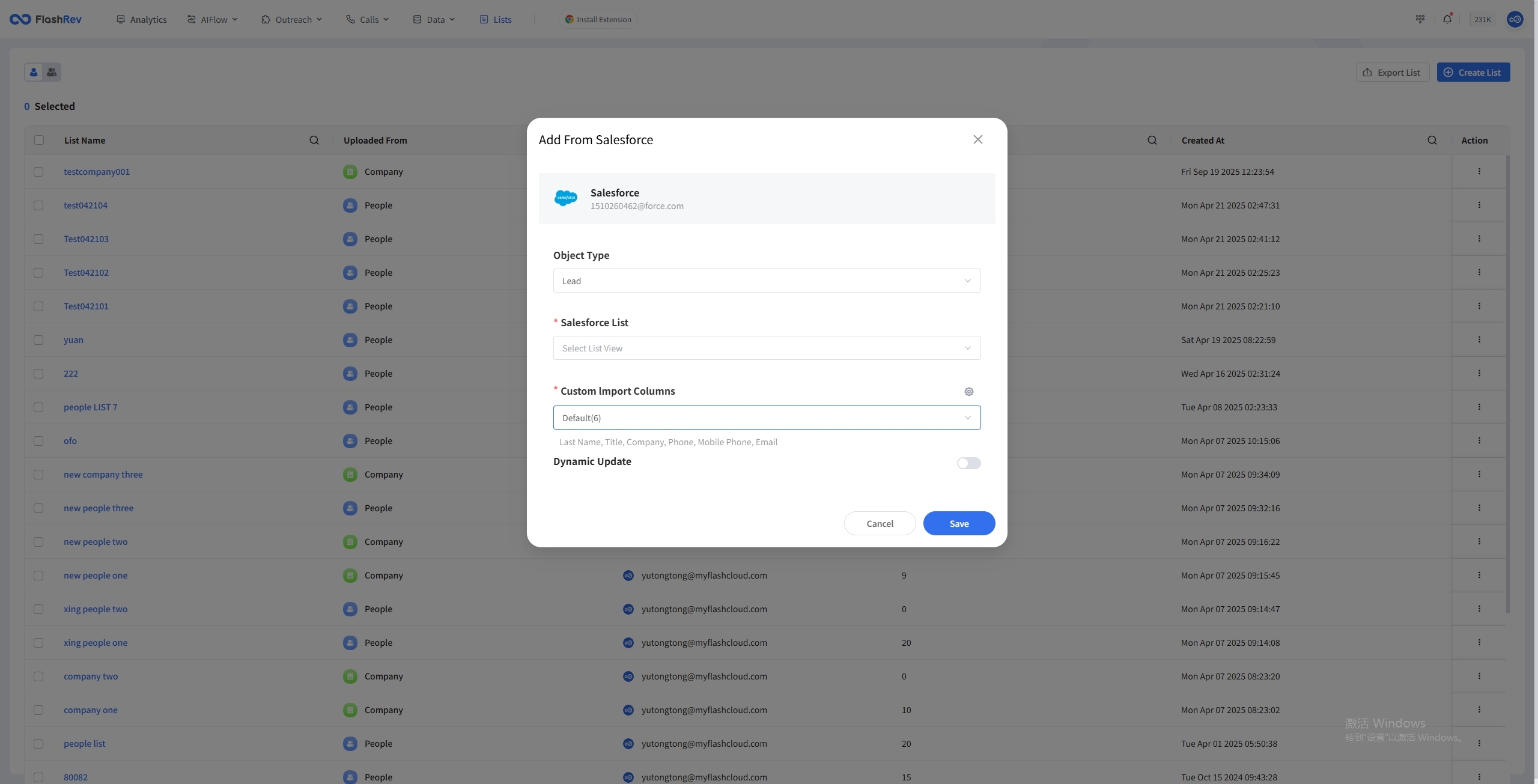
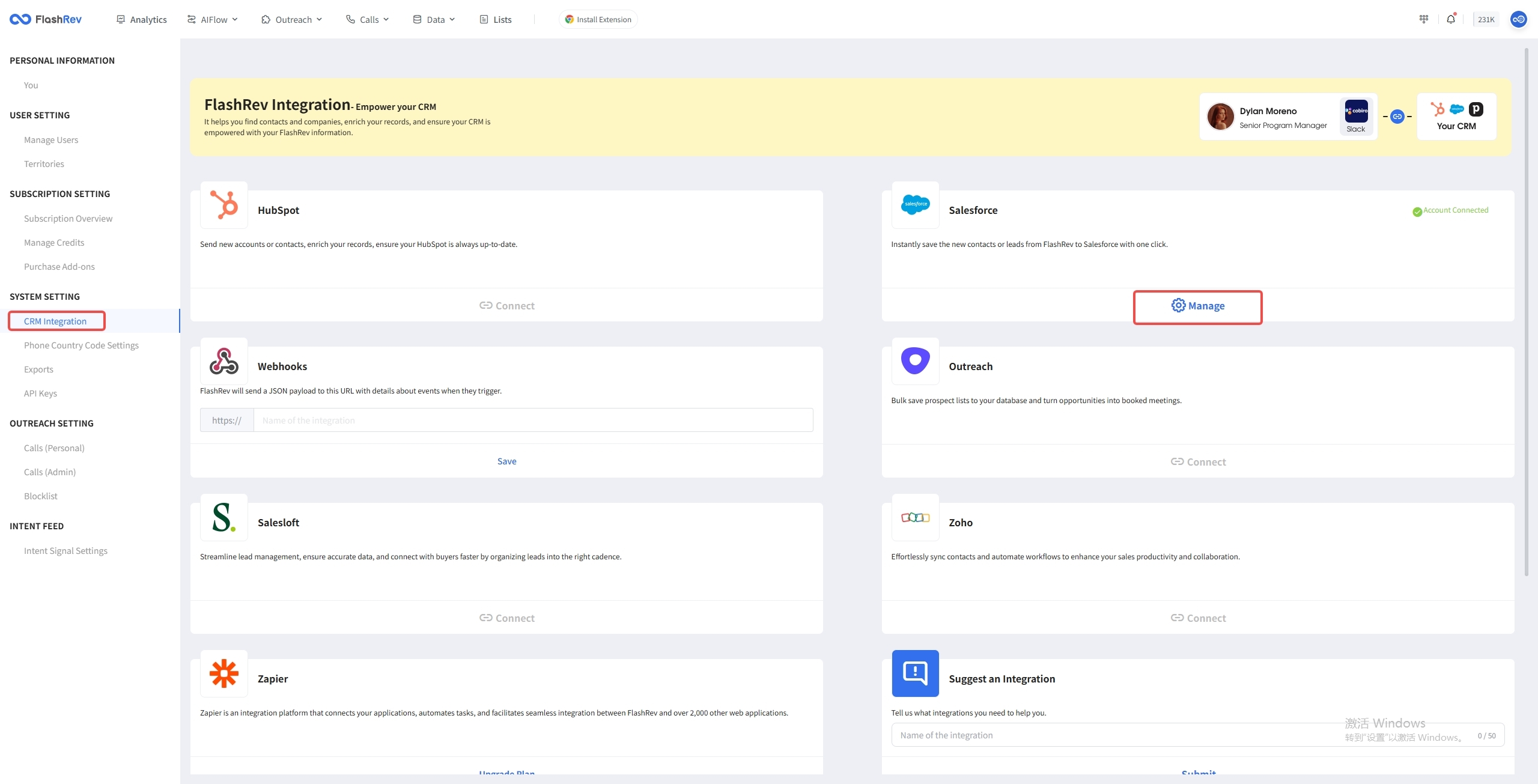
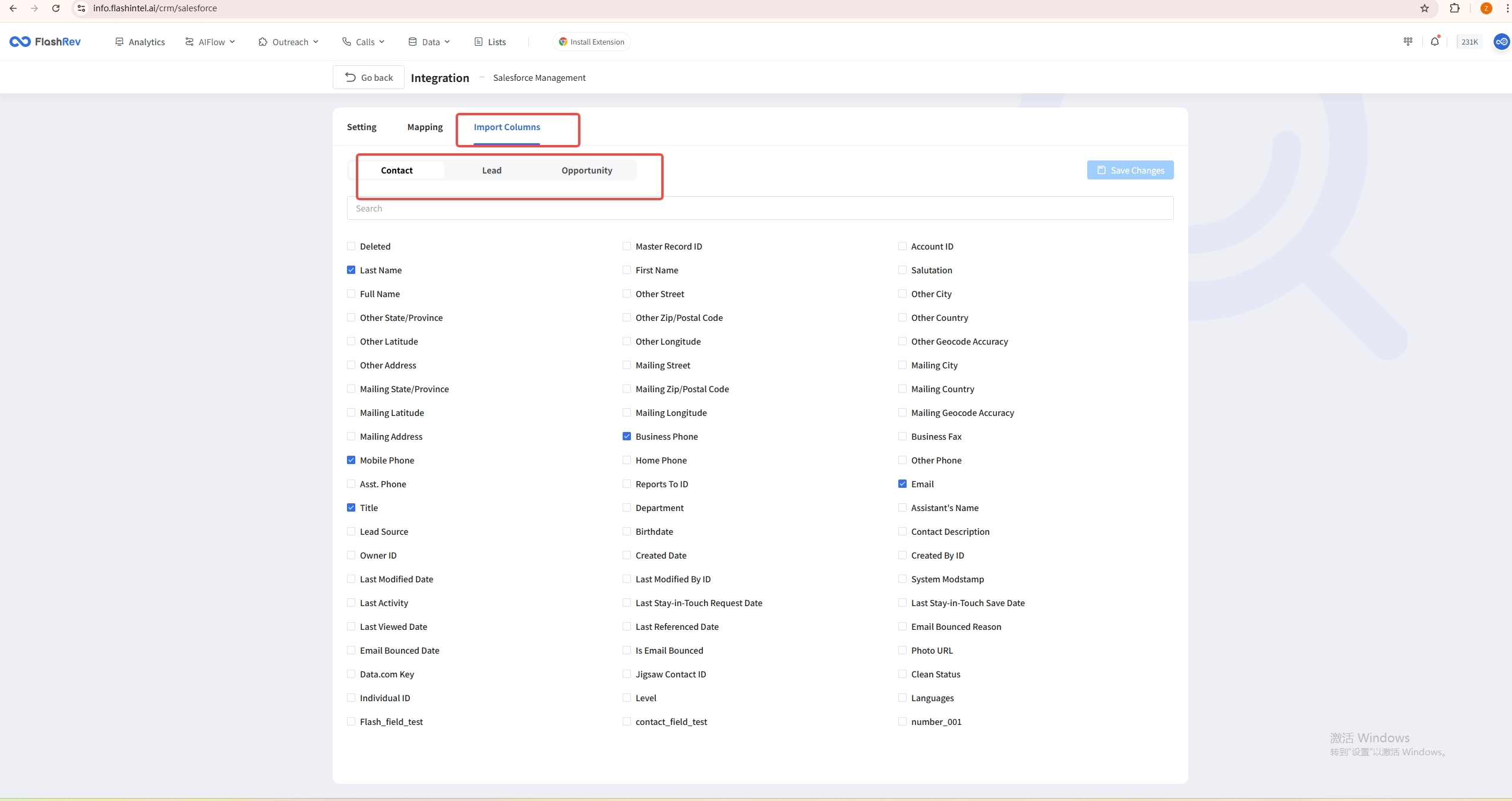
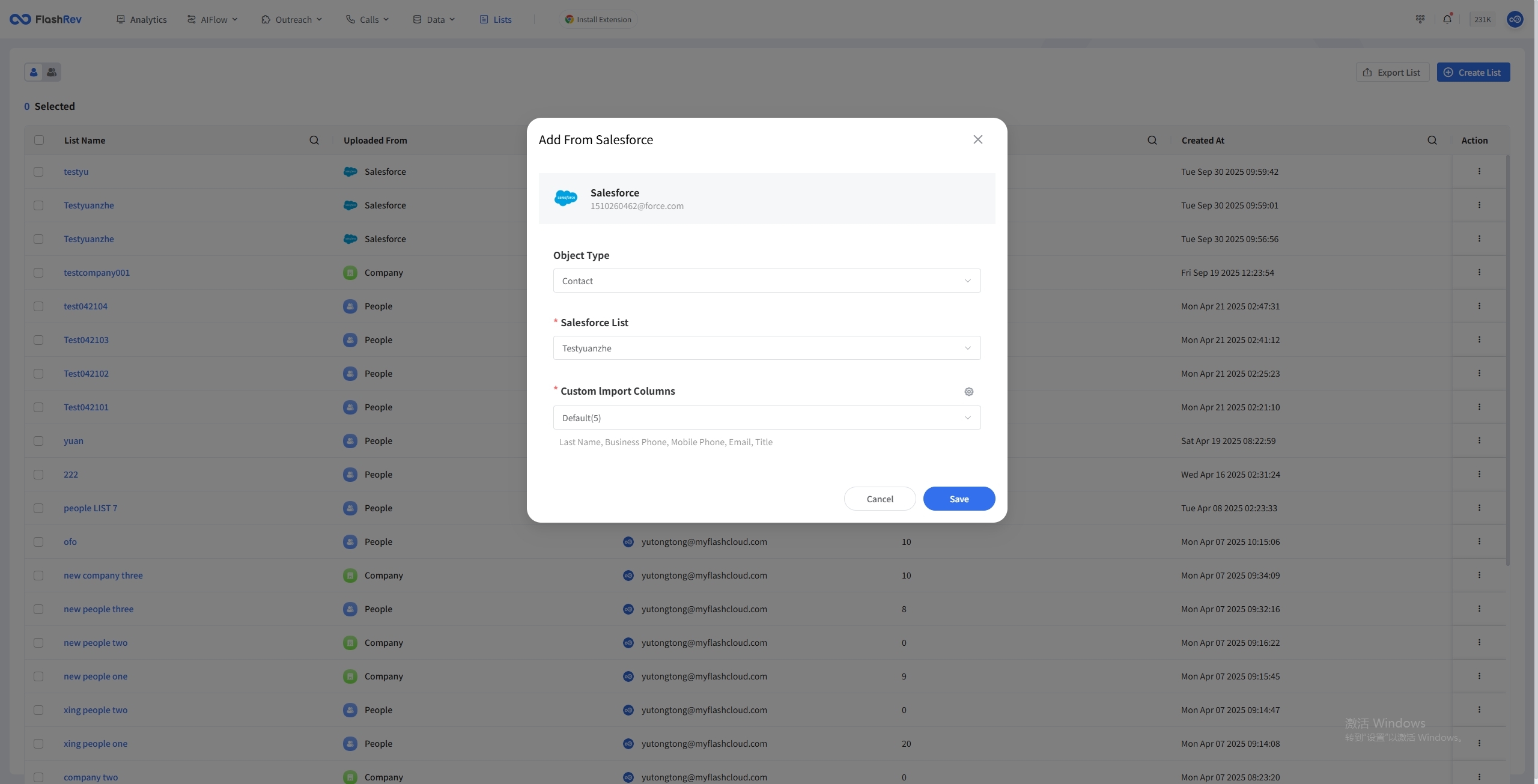
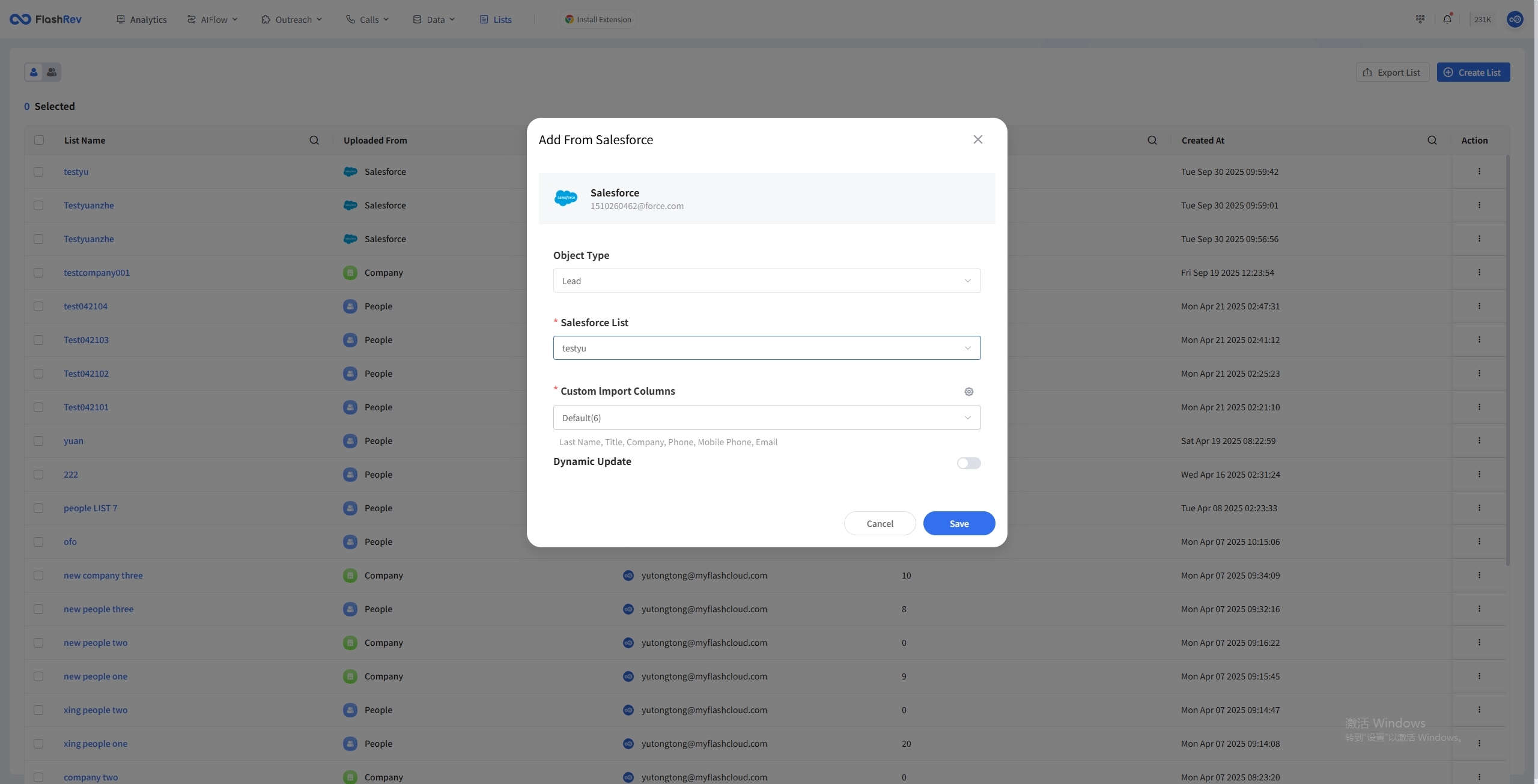
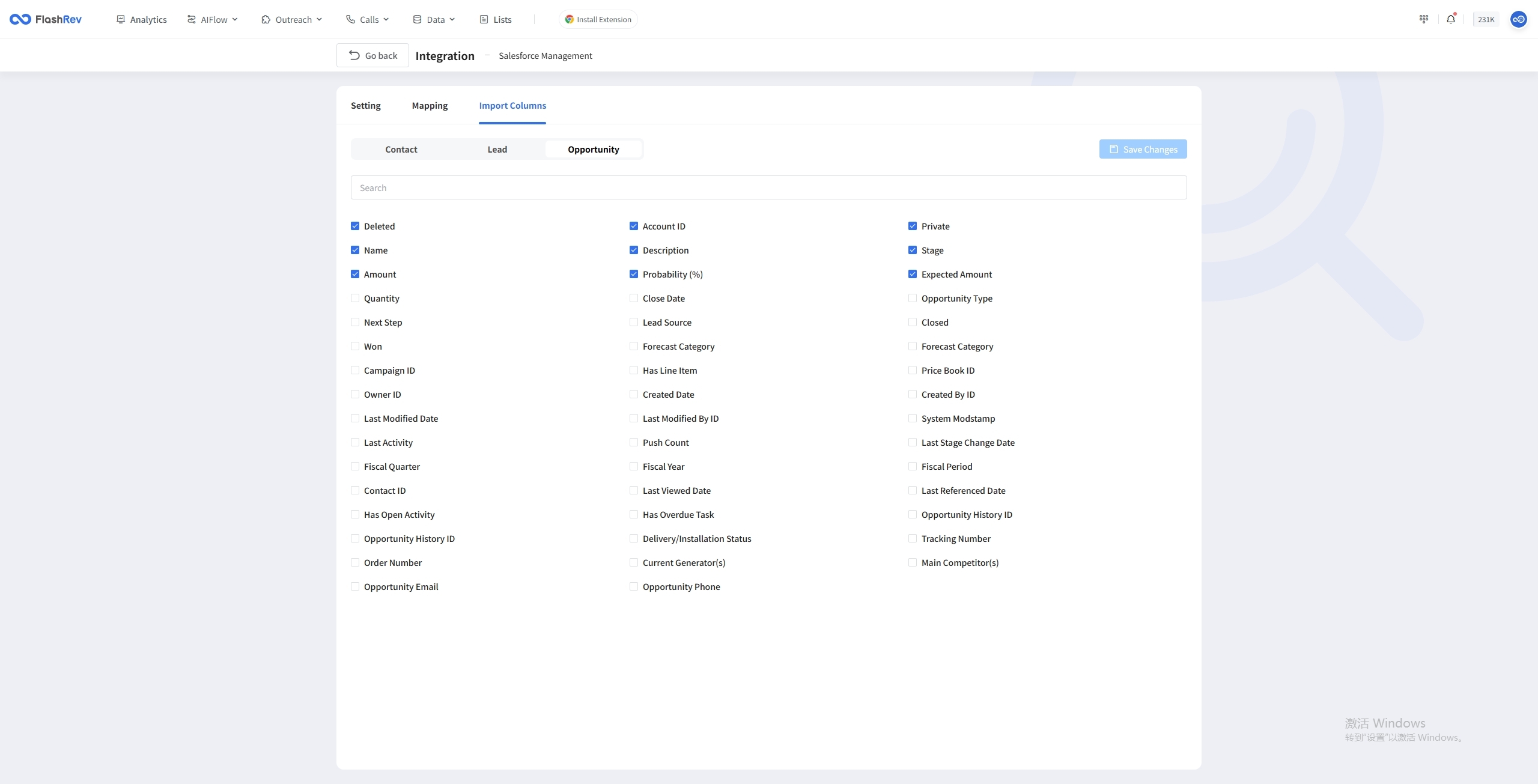
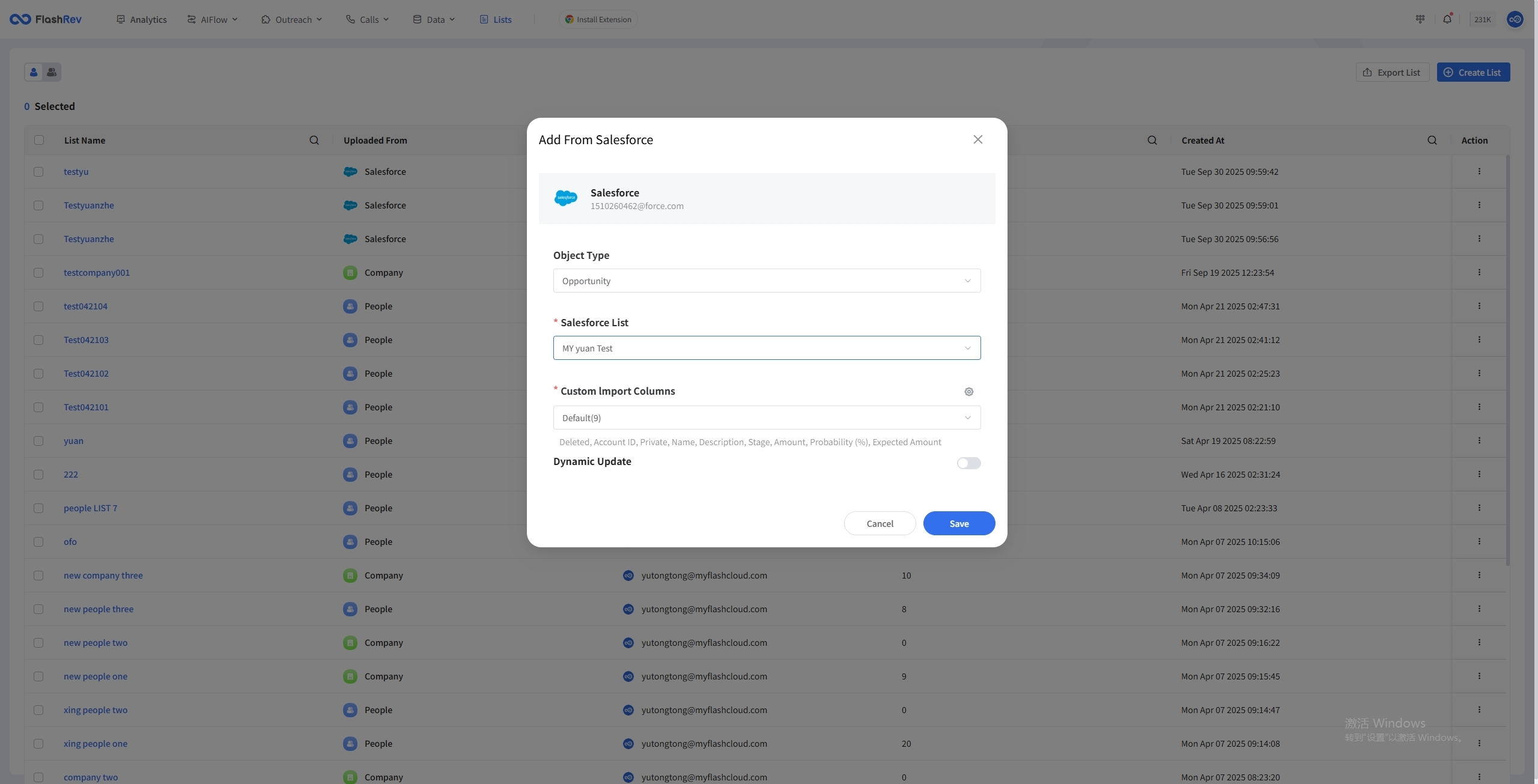
2. SuiperAgent Change super-agent to SuperAgent SuperAgent copywriting and UI modification; change text box prompt words Default model adjustment and optimization Change placeholder copy Optimize context, adjust backend permissions
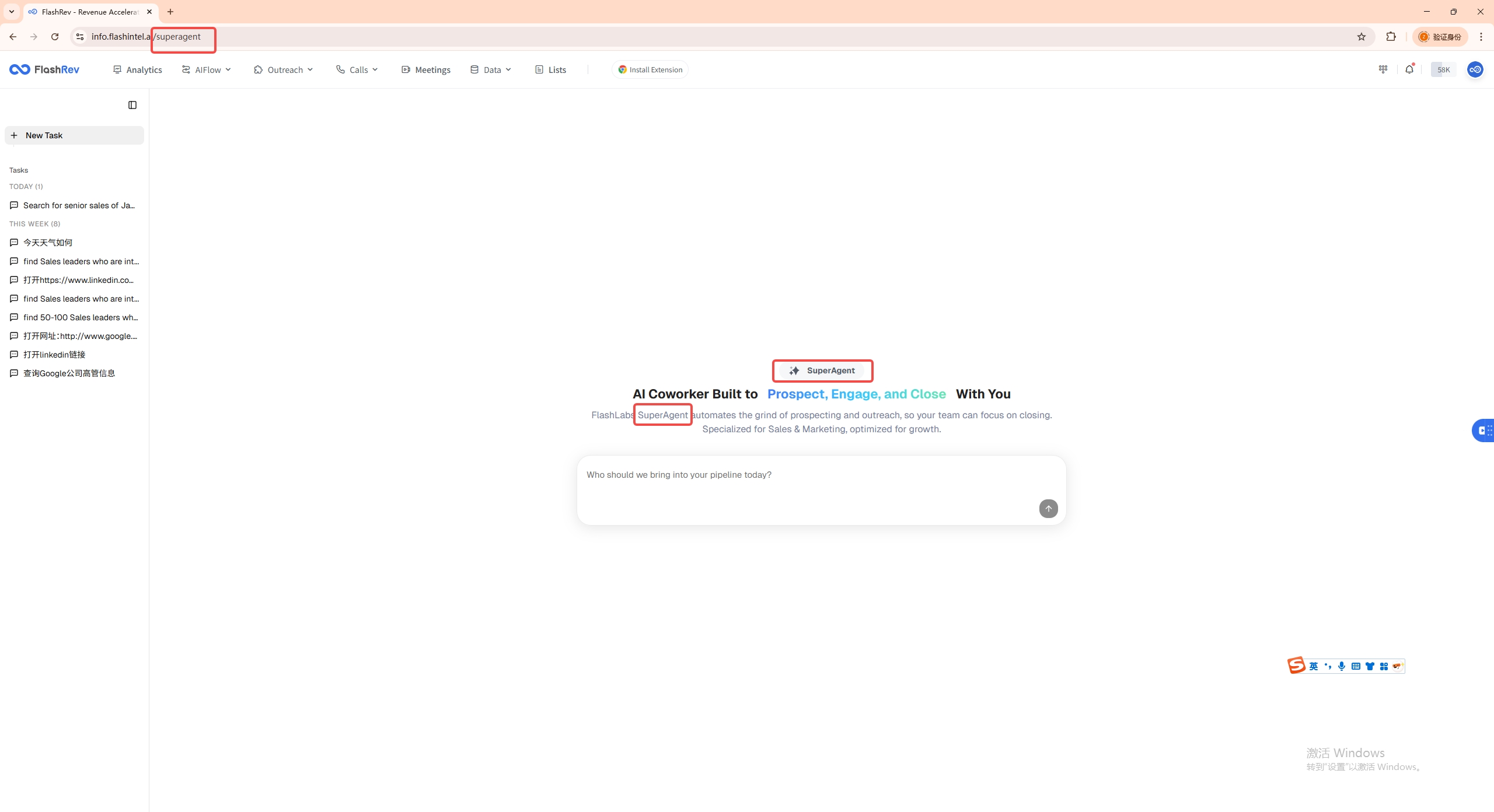
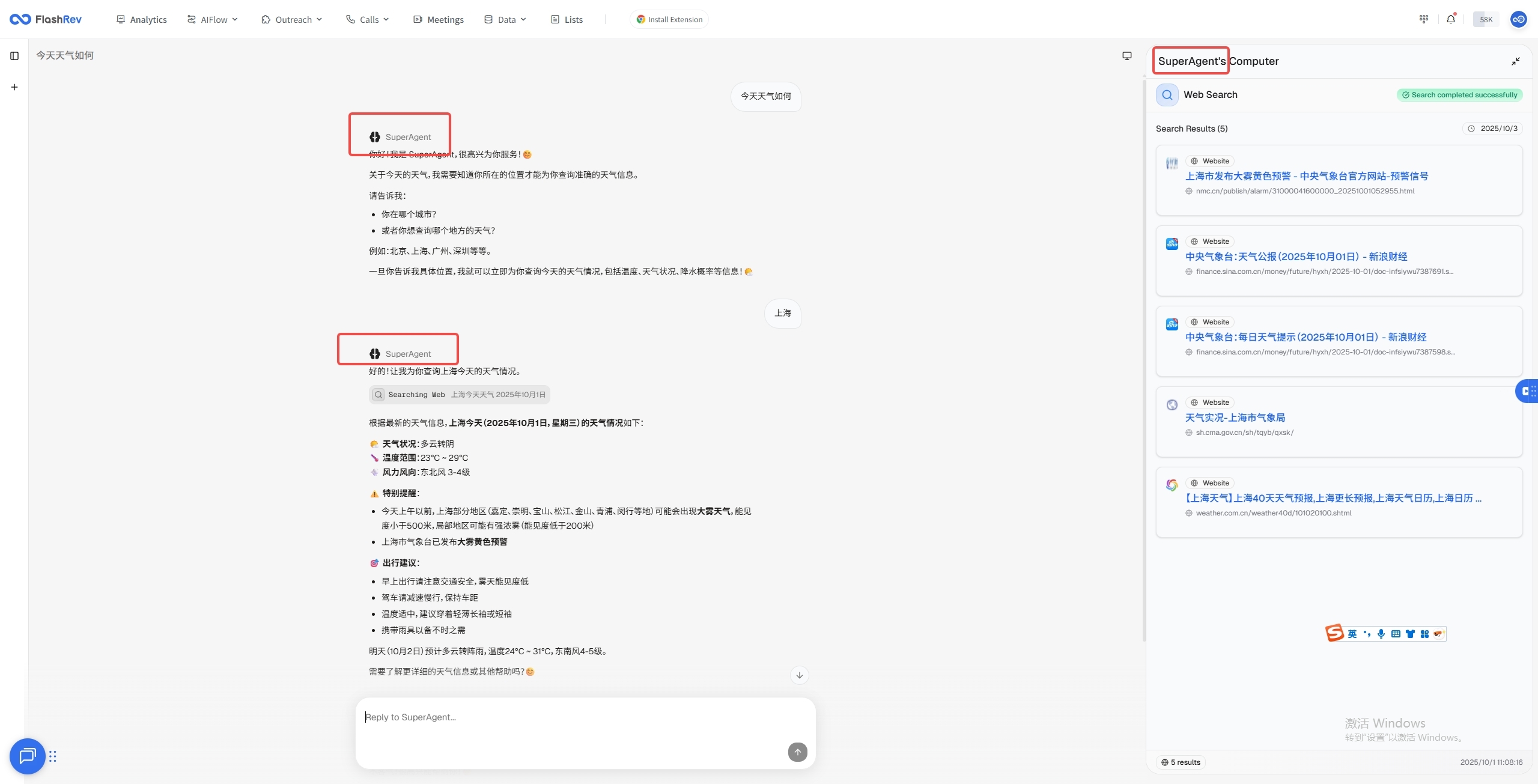
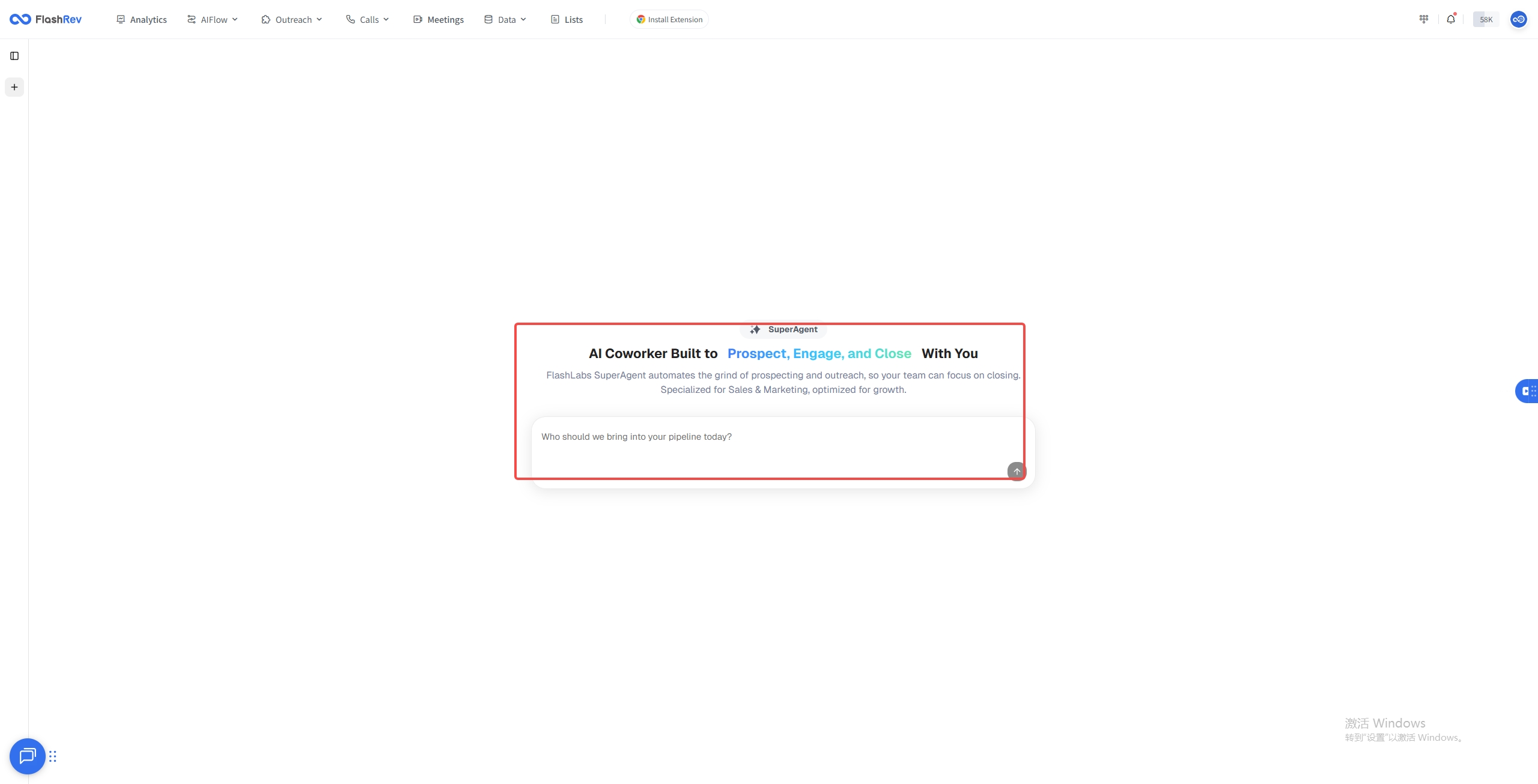
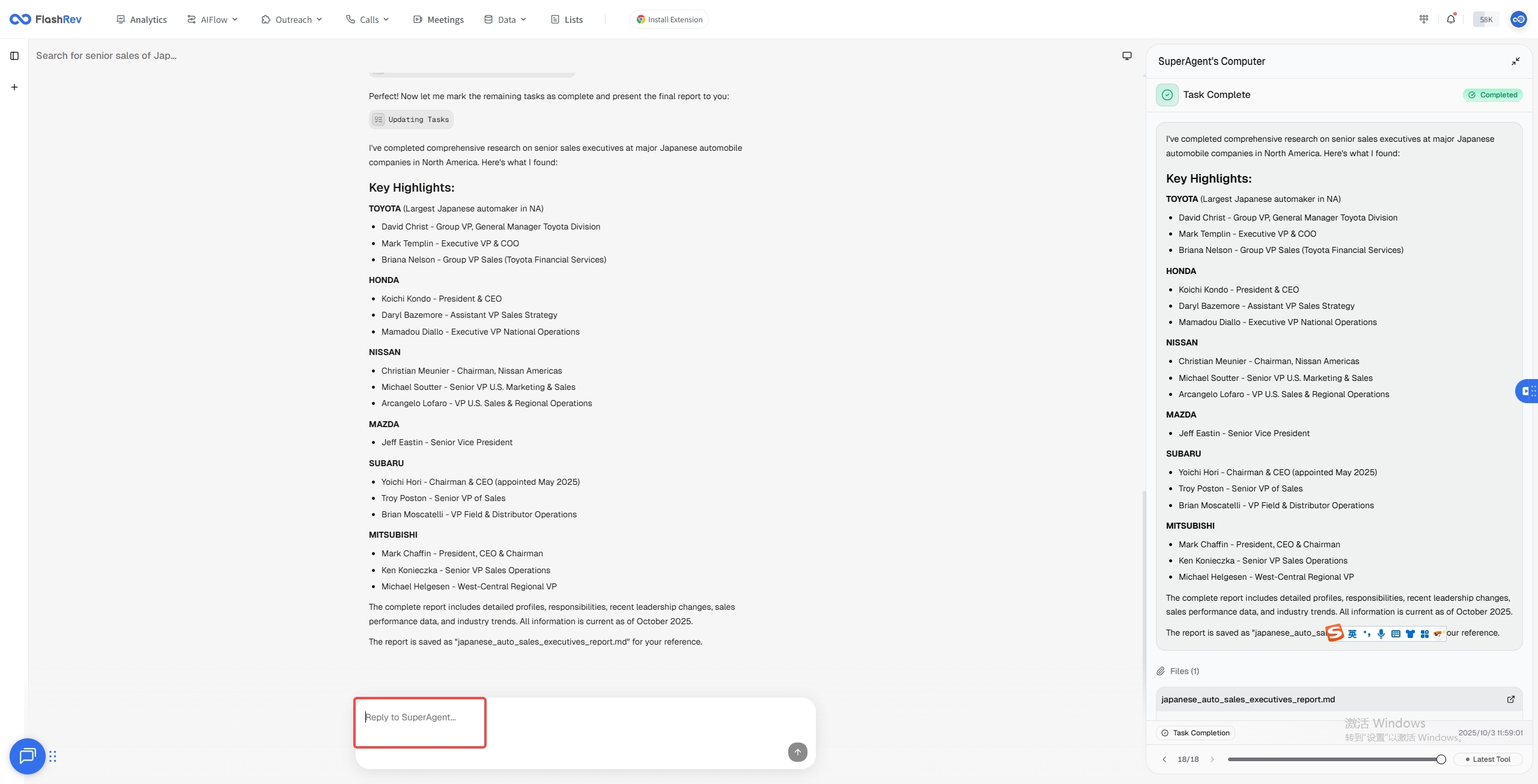
3.HUBspot account payment authorization, obtain the organization name of FlashRev. successfully paid, update FlashRev. organization valid period, and log in the background
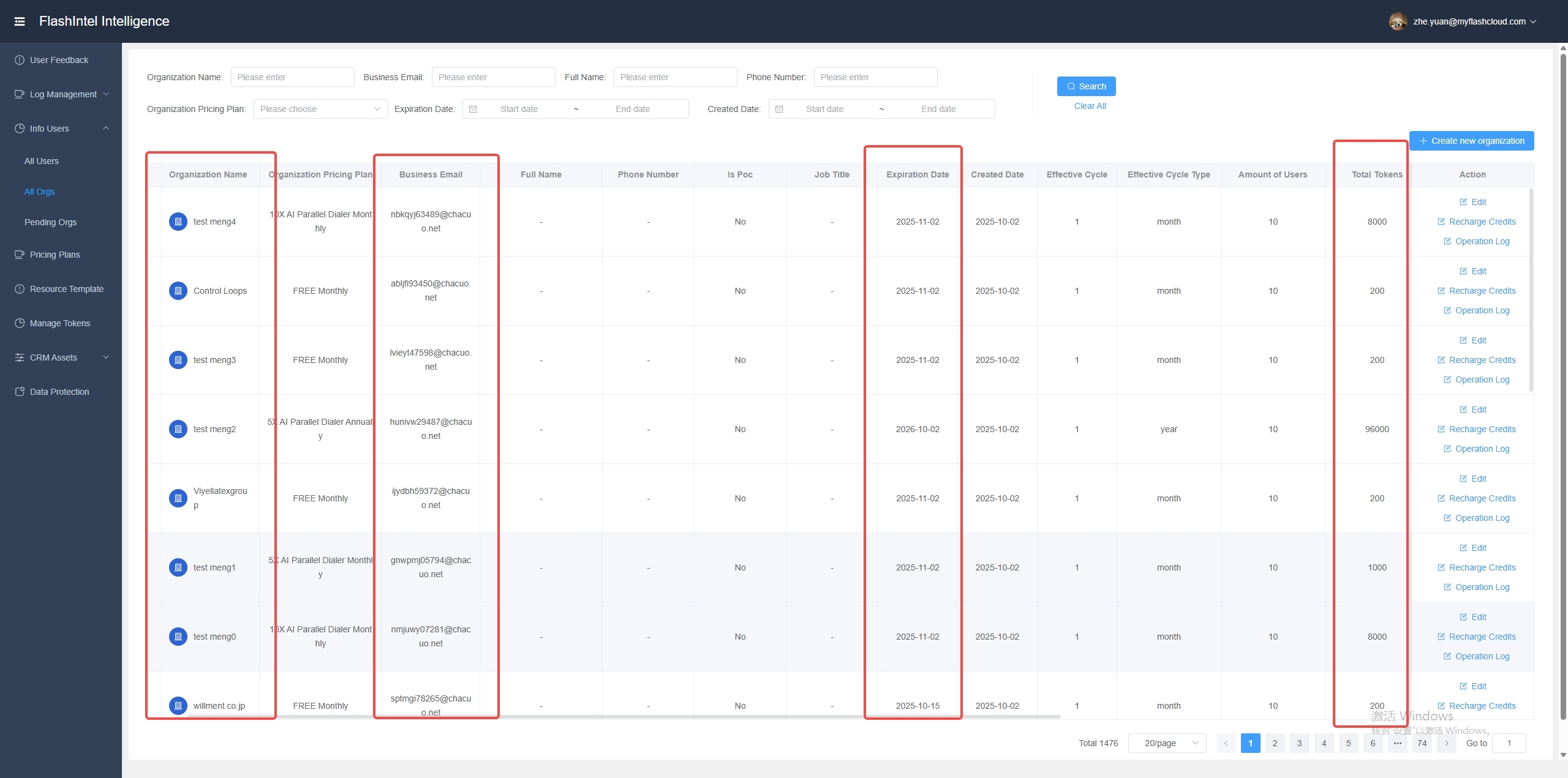
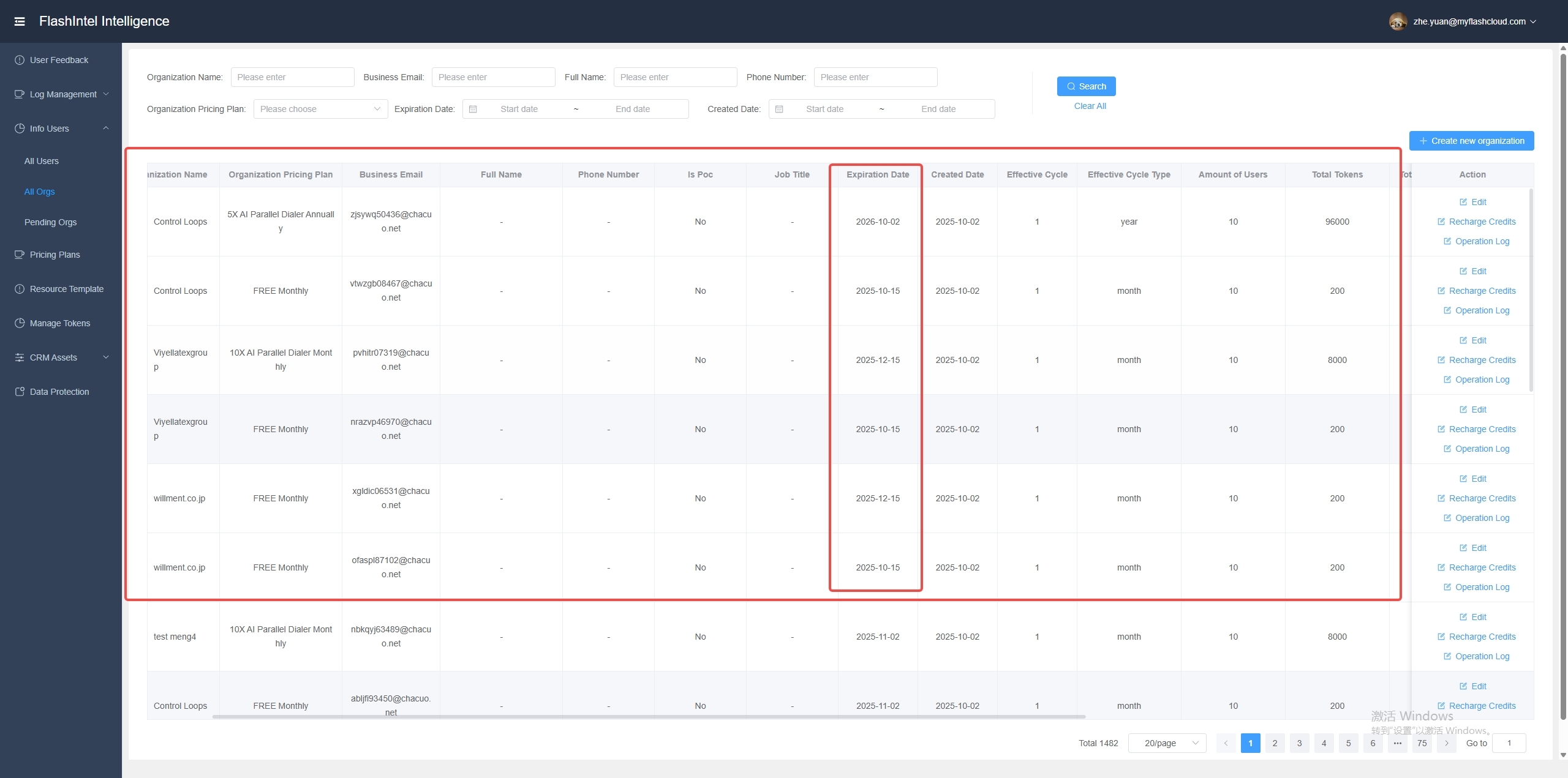
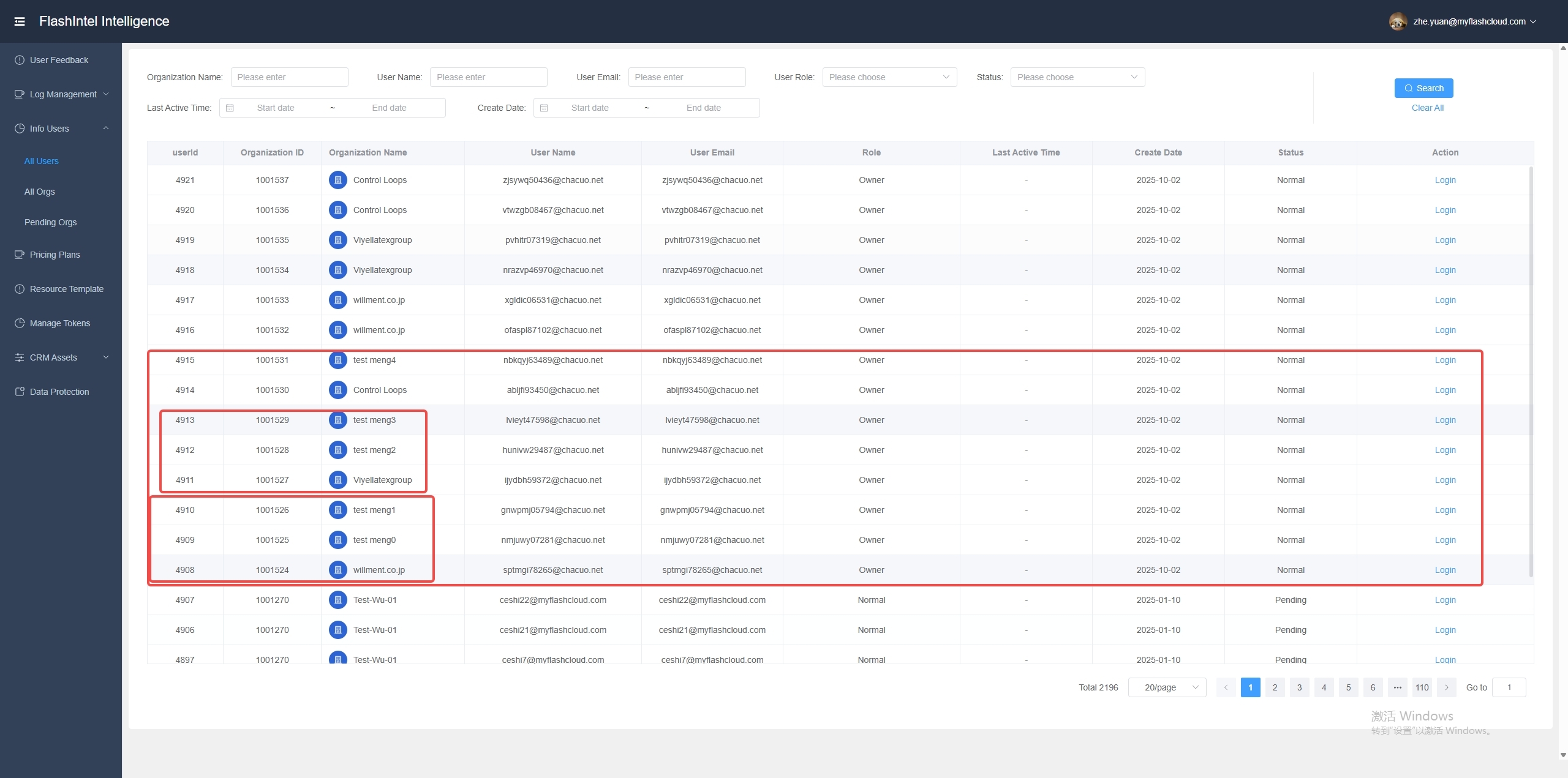
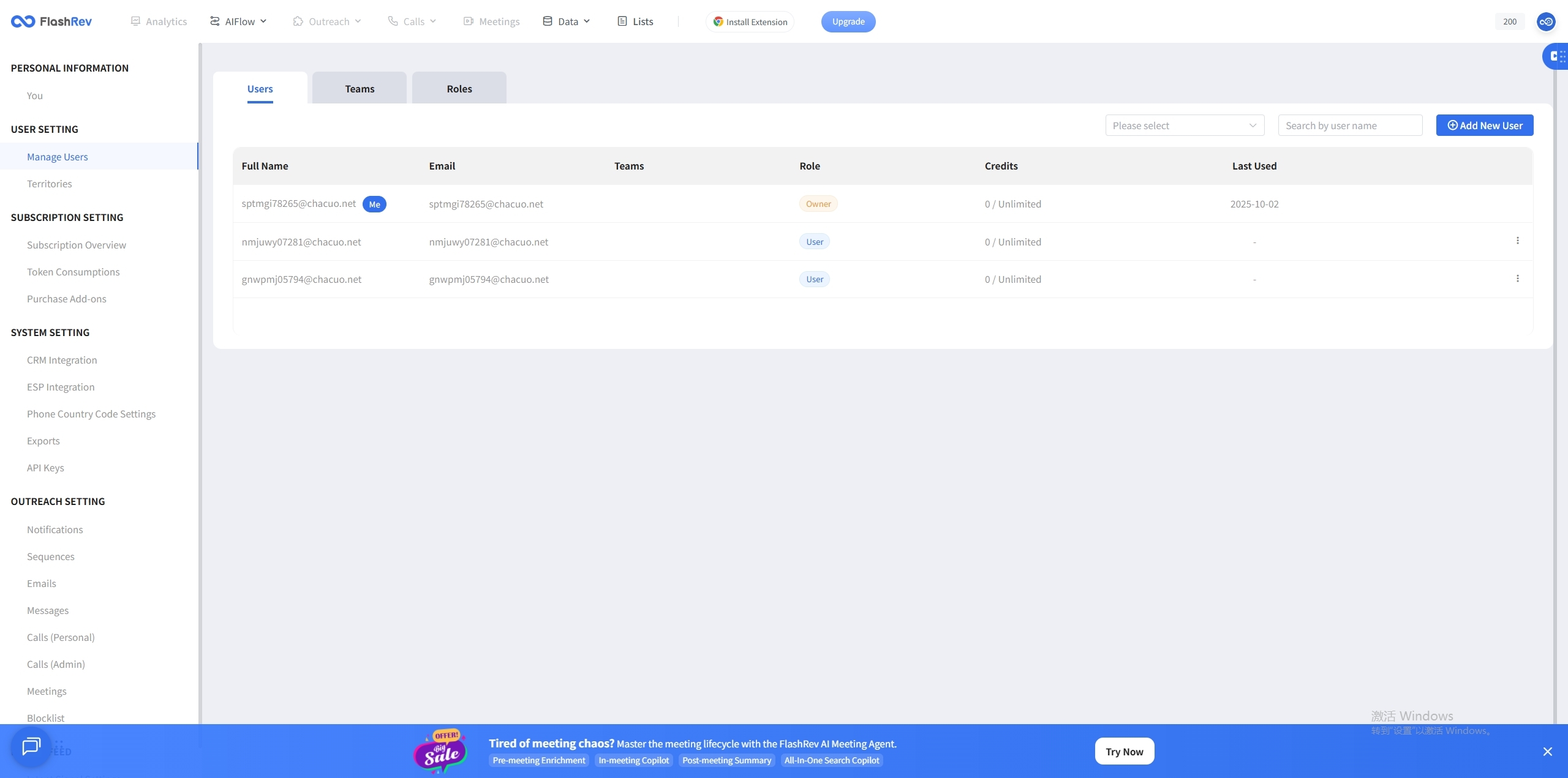
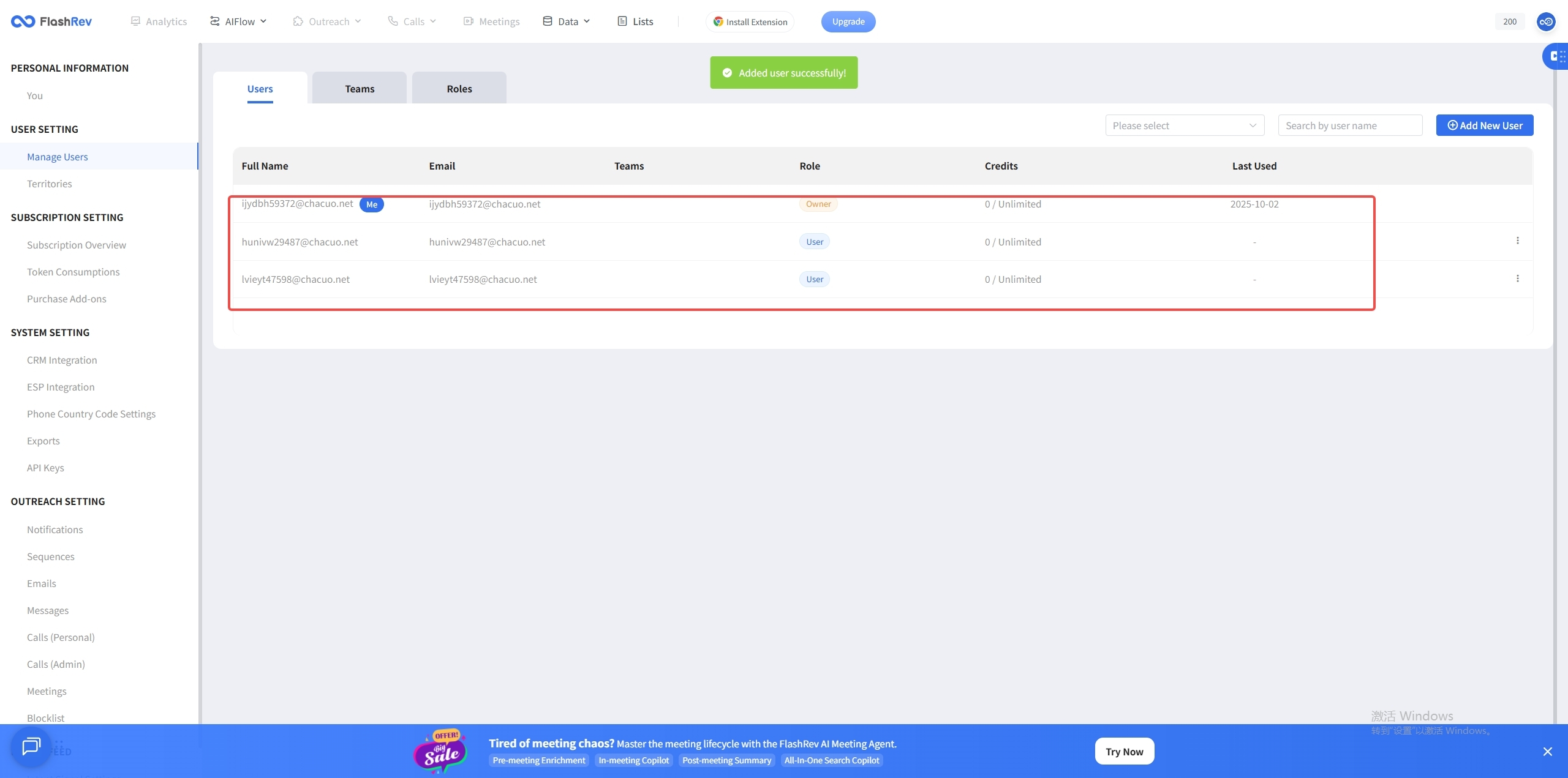
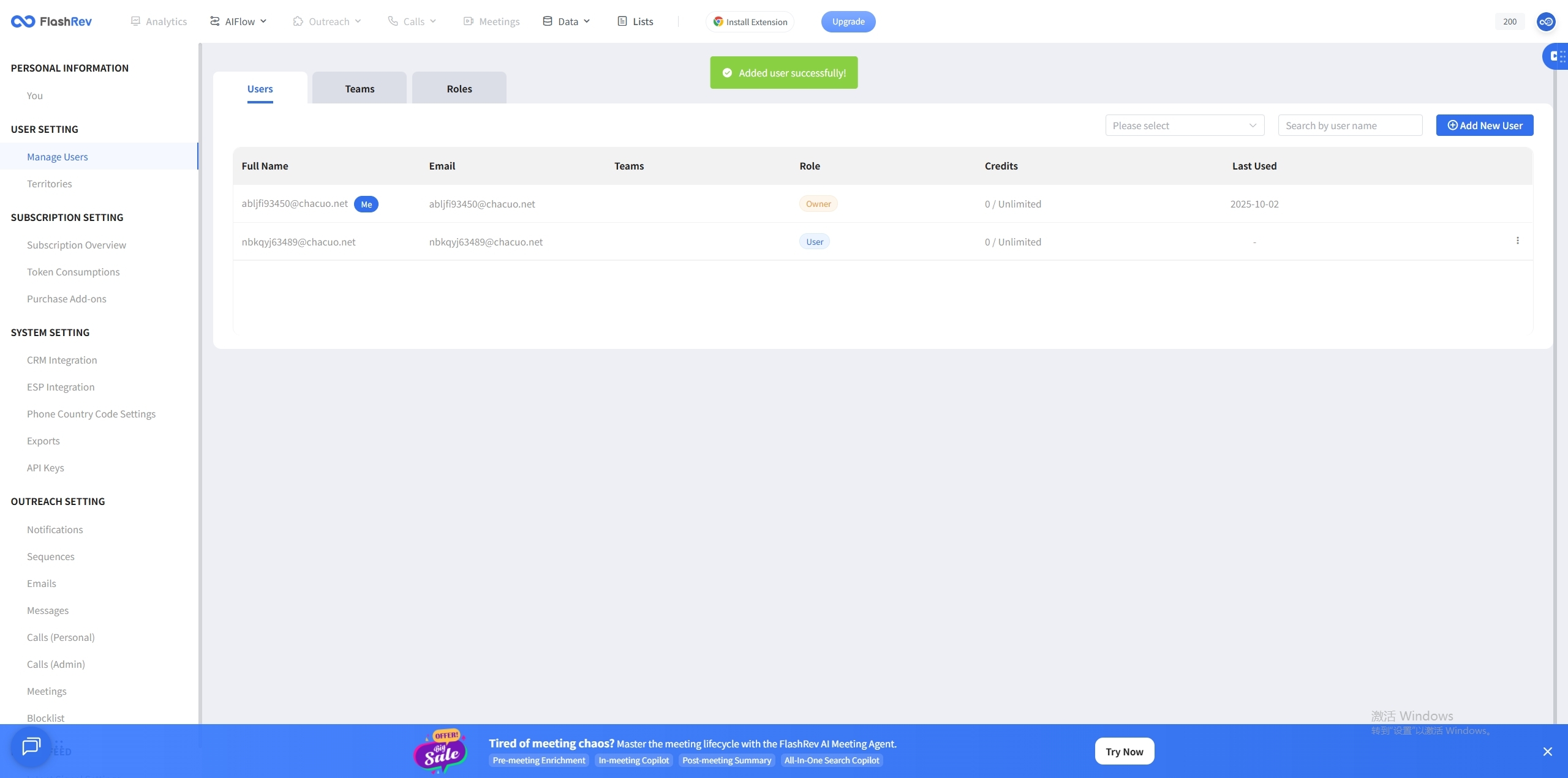
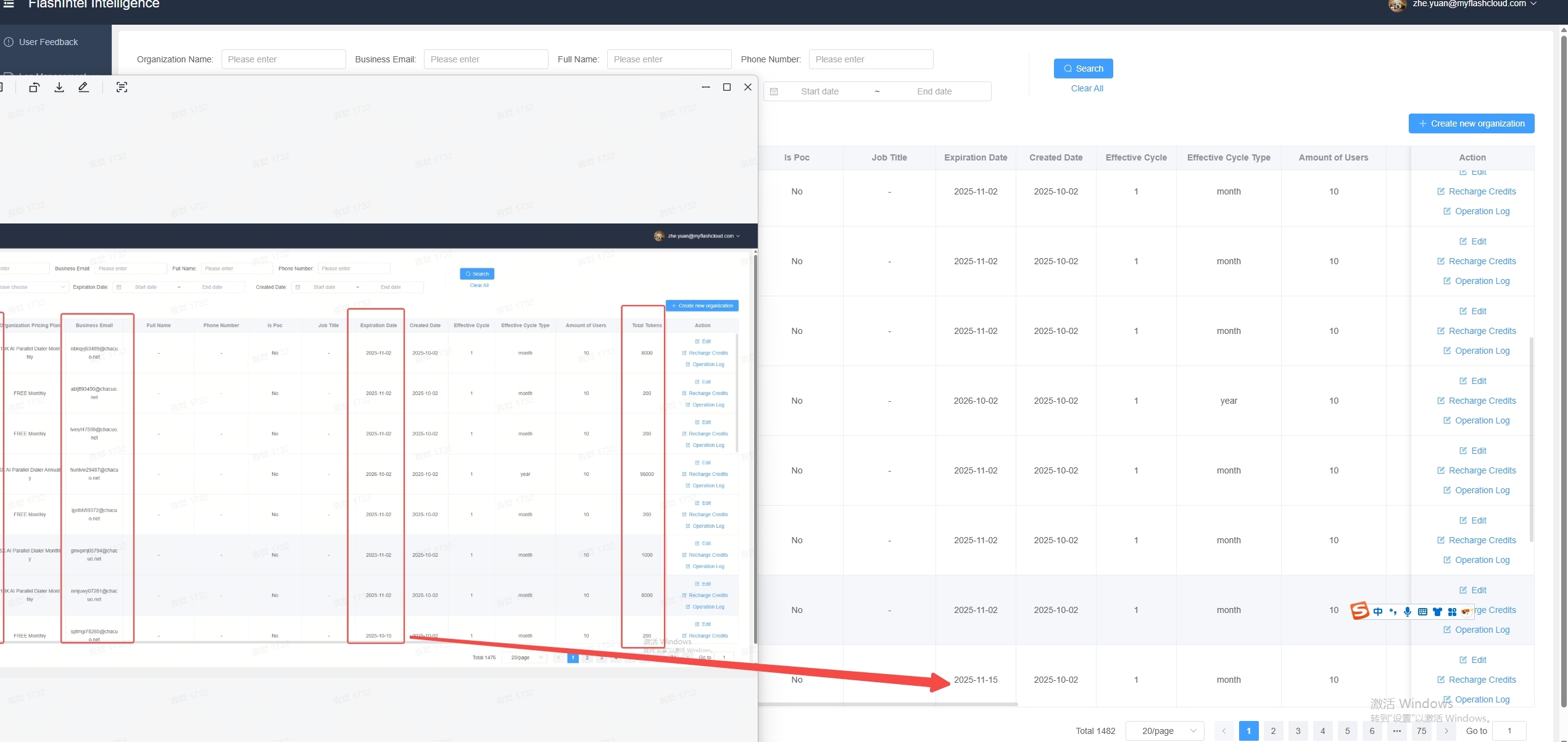
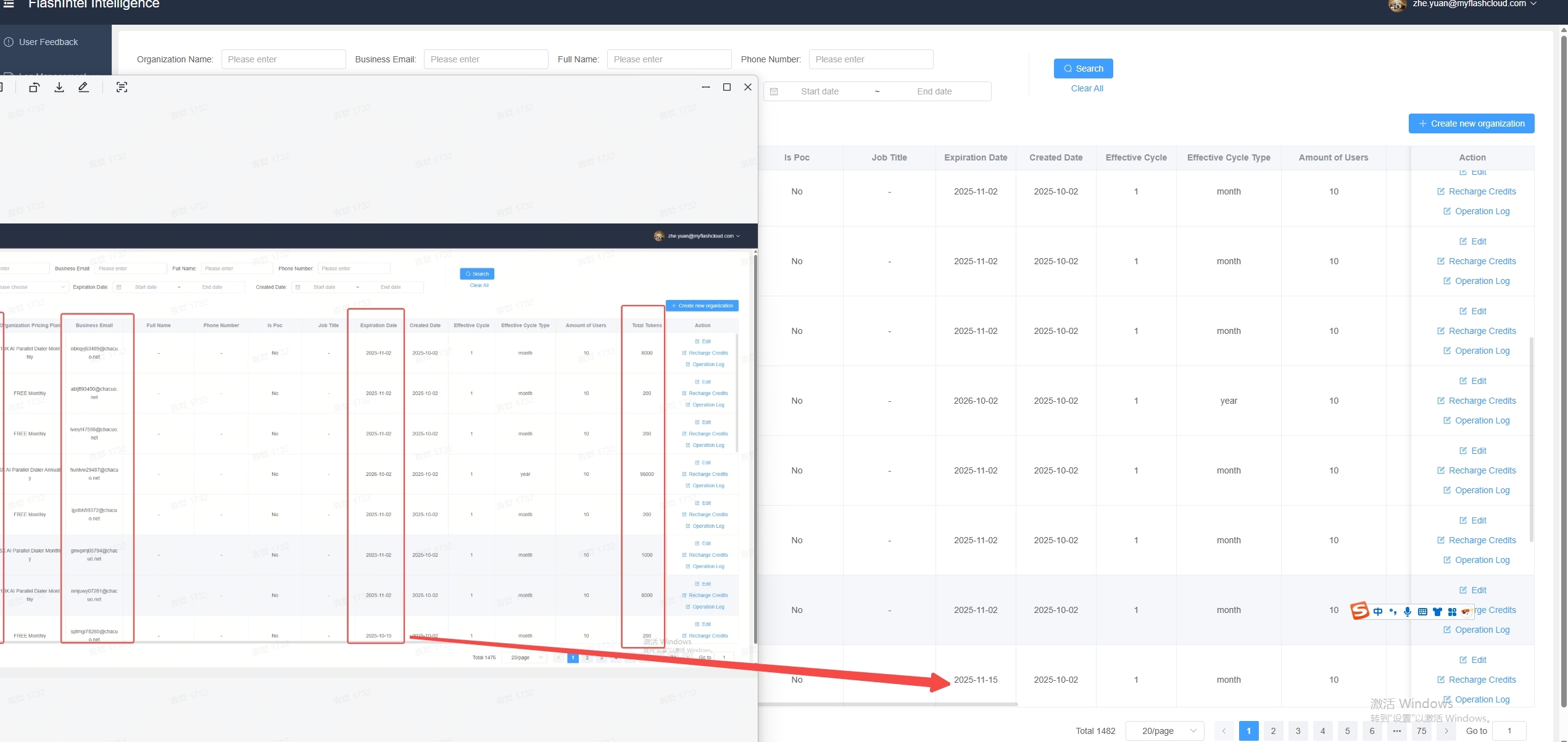
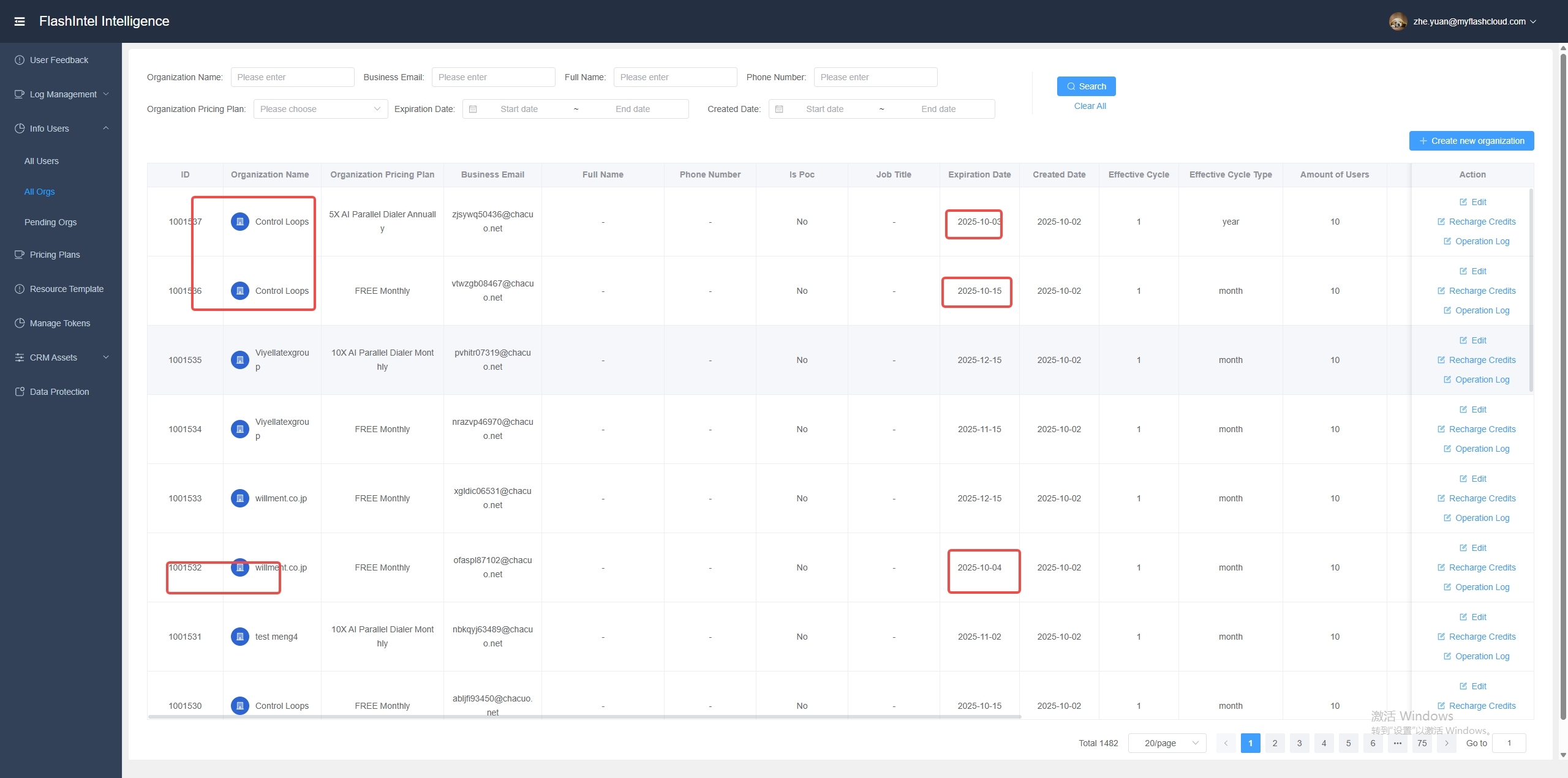
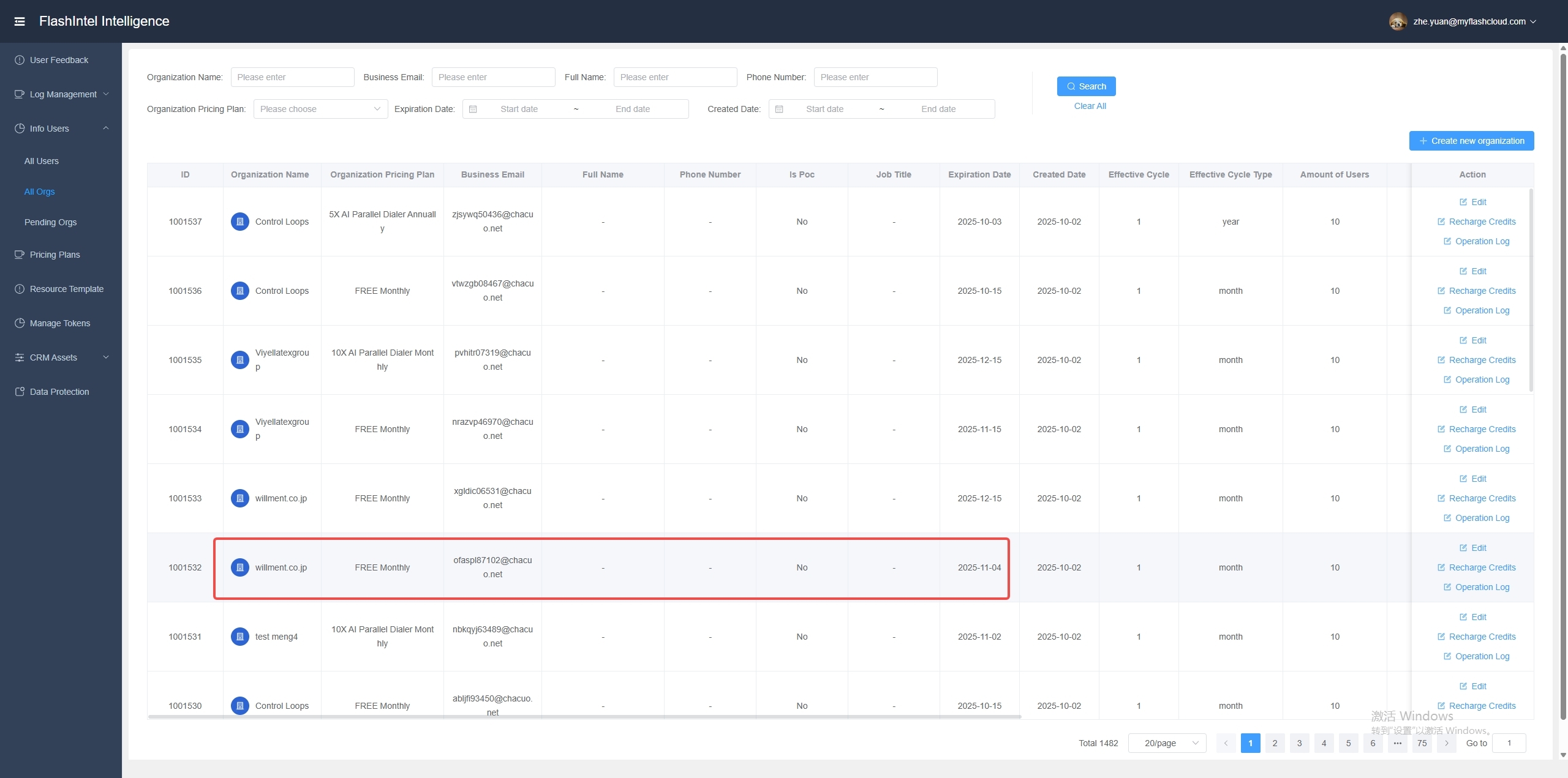

4. Update email sending template
FlashRev Outreach
1. Dialer Update: Randomized Dialing Order for Parallel Dialer

Introduction:
To help sales teams reach a broader portion of their outbound contact lists and reduce repeated dialing on the same phone numbers across agents, the Parallel Dialer now supports a randomized dialing mode.
Background:
When multiple agents share the same list and dial during similar working hours, the system tends to surface the same subset of numbers repeatedly. Meanwhile, a large portion of phone numbers remain untouched, especially in very large datasets where list size can reach hundreds of thousands of entries. As a result, dialing efficiency suffers and contact coverage becomes uneven.
Key Update:
A new configuration option, “Randomize dialing order,” has been added to the Parallel Dialer.
-
When the option is disabled, the dialer follows the existing ordering logic: undialed contacts appear first, while previously dialed contacts are sorted by their last dialed time.
-
When the option is enabled, every phone number in the dialing list is assigned a random sorting factor. The list is then reordered based on this factor.

-
Any new phone number added to the list receives a random sorting factor immediately and is inserted randomly into the existing queue.

-
Users can trigger “Shuffle again” to fully reshuffle the dialing order. Due to the computational cost of this operation, reshuffling occurs during off-peak system periods to avoid impacting live dialing sessions.

-
In both modes, numbers that have already been dialed continue to be placed behind undialed numbers.

Benefits:
-
Reduces the likelihood of multiple agents dialing the same contact repeatedly.
-
Improves fairness and overall coverage across very large dialing lists.
-
Increases the probability of reaching previously untouched contacts and prevents useful leads from being buried at the bottom of the queue.
2. Sequence Update : Sequence-Level Sender Pools for SMS and LinkedIn Accounts
Introduction:
To give users more control over which outbound identities are used during sequence execution, sequences now support configurable sender pools for SMS numbers and LinkedIn accounts.


Background:
Previously, when a sequence contained SMS or LinkedIn steps, the system would randomly select a sending account from all SMS numbers or LinkedIn accounts owned by the sequence creator. Users had no visibility into which number or LinkedIn profile was being used, nor could they control which identity was applied in different outreach strategies.
Key Update:
Users can now configure which SMS numbers and which LinkedIn accounts a sequence should use during execution.
-
A sequence can now be assigned a pool of selected SMS numbers and/or LinkedIn accounts instead of using all available accounts.
-
During execution, messages or connection requests will be sent using only the accounts included in that sequence-level pool.
-
If multiple accounts are selected, the system will rotate through them intelligently.
-
This gives users precise control over branding, deliverability, compliance, and campaign-specific identity management.
Benefits:
-
Greater control over which sender identity is used within each sequence.
-
Ability to apply different outbound numbers or LinkedIn profiles for different campaigns or audiences.
-
Improved transparency and account governance across multi-account environments.
3. Meeting Update: Improved Meeting Summaries and Action Items
Introduction:
Meeting Reports have been upgraded to provide more detailed meeting summaries and more actionable insights through enhanced action items. These improvements help users better understand discussion points, client behavior, and follow-up priorities.
Background:
Previously, meeting summaries generated from transcripts listed key points but lacked clarity on client feedback and actionable next steps. Action items extracted from meetings did not include explicit priority or deadline information, making it harder for users to plan follow-ups efficiently.
Key Update:
-
Meeting Summary Improvements


-
Summaries now include a more detailed breakdown of meeting topics.
-
A new Client Behavior module has been added, highlighting client feedback, potential next actions (renewal, upgrade, cancellation), and other actionable signals from external meetings.
-
-
Action Items Enhancements



-
Each action item now includes Priority (High / Medium / Low) and Deadline attributes.
-
Priority and due time are visible both in the meeting summary page and in the Meetings → For You interface.
-
Tasks automatically generated from action items will inherit the corresponding task priority and task due date, ensuring consistency across workflow tools.
-
Benefits:
-
Provides a clearer and more structured view of meeting discussions.
-
Highlights client intentions and feedback for better decision-making.
-
Improves follow-up planning by automatically setting task priority and due dates.
4. Meeting Update: Customizable Meeting Classification Tags
Introduction:
Users can now create, modify, or remove meeting classification tags to better reflect their organization’s unique meeting types. This allows for more personalized and accurate AI-driven meeting categorization.
Background: Previously, all users had access to a fixed set of
two parent categories and
fifteen subcategories. After a meeting was recorded, the AI would automatically assign a meeting type based on its transcript. However, this rigid system did not allow organizations to tailor meeting classifications to their own workflows or specific use cases.
Key Update:
-
Users can add or delete meeting classification tags to build a custom set of categories for their organization.


-
After a meeting ends, the AI will classify the meeting based on the latest set of user-defined tags, ensuring classification reflects the organization’s current structure and preferences.

Benefits:
-
Provides organizations with flexible, personalized meeting classifications.
-
Improves accuracy of AI-driven meeting categorization based on organizational context.
-
Supports evolving workflows by allowing custom tags to be updated at any time.
5. Meeting Update : Improved Handling of Meetings with No Detection Participant Speech
Introduction:
The system now clearly communicates when a meeting recording produces no transcript, summary, or action items due to a lack of participant speech, helping users understand why no content is available.
Background: Previously, when users visited the
Meetings → Booking page to view AI-generated reports, they occasionally encountered empty meeting reports—no transcript, summary, or action items—even after clicking “Generate Again.” This usually occurred when the AI Meeting Agent joined the meeting and recorded it, but no participants spoke (for example, absent clients or all participants muted). In sales meetings, this scenario is common, but users often misunderstand it as a system error.



Key Update:


-
The Meetings → Booking page now visually indicates whether a transcript was generated for each meeting.
-
On the meeting report detail page, a clear notification explains when no transcript, summary, or action items are available because no participant's speech was detected.
-
Users are no longer left uncertain when meeting content is empty, and unnecessary retries are minimized.
Benefits:
-
Improves transparency by clearly showing why a meeting report may be empty.
-
Reduces user confusion and wasted time attempting to regenerate reports.
-
Provides a more intuitive and informative meeting review experience, especially for sales meetings with silent participants.